Text
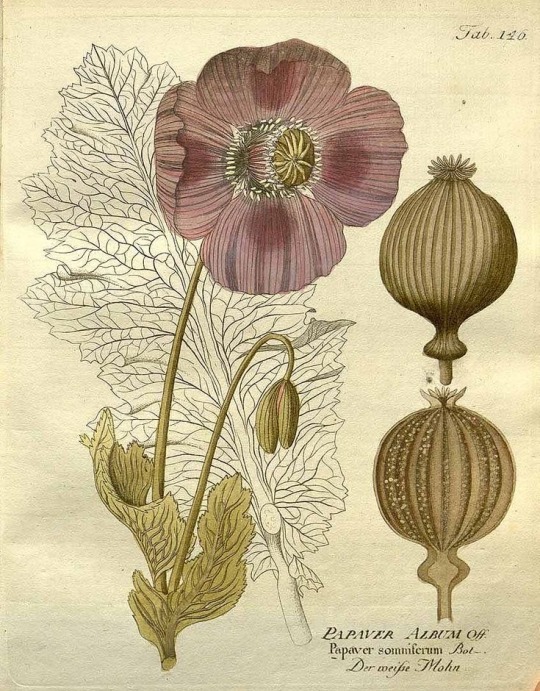
Opium Poppy (papaver somniferum) by F.B. Vietz, 1804.
#bane folk#poisonous plants#toxic plants#opium poppy#breadseed poppy#papaver somniferum#botanical art#botanical illustration
9 notes
·
View notes
Text
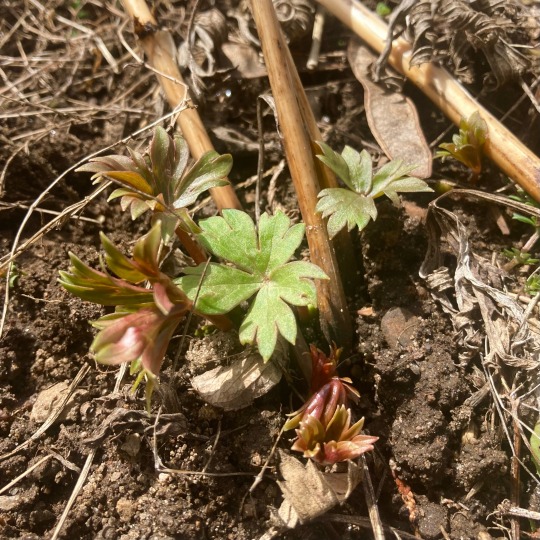
My Chinese wolfsbane (aconitum carmichaelii) are just starting to sprout in the poison garden.
#bane folk#aconite#wolfsbane#monkshood#aconitum carmichaelii#poisonous plants#toxic plants#poison garden
12 notes
·
View notes
Text

Pardon me while I obsess over Cloudy Monkshood…
Photo: F.D. Richards, Wikimedia Commons
9 notes
·
View notes
Text

Mandragora officinarum coloured botanical engraving, 1836.
Source: Novi Commentarii Academiae Scientiarum Instituti Bononiensis, scientific journal (1834–1849).
#bane folk#mandrake#mandragora#mandragora officinarum#poisonous plants#toxic plants#toxic botanicals#botanical illustration#botanical art
9 notes
·
View notes
Text

Ancient Egyptian floral collar from Tutankhamun’s tomb crafted from threaded mandrake fruits, blue lotus petals, poppies, cornflower, olive and laurel tree leaves, dyed linen, and blue beads on a papyrus backing, circa 1336-1327 BCE.
Fresh flower garlands, arrangements, and adornments were a part of funerary rites for ancient Egyptian nobility with each botanical having a different meaning like the Victorian language of flowers
Source: Met Museum
#bane folk#mandrake#mandragora officinarum#blue lotus#poisonous plants#toxic plants#toxic botanicals#ancient egypt#tutankhamun#ethnobotany
11 notes
·
View notes
Text

Wormwood (artemisia absinthium) hand coloured engraving by Leonhart Fuchs, 1543.
70 notes
·
View notes
Text
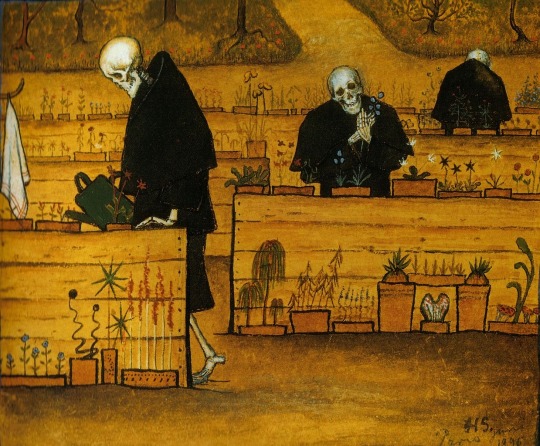
“The Garden of Death” by Finnish painter Hugo Simberg, 1896.
249 notes
·
View notes
Text


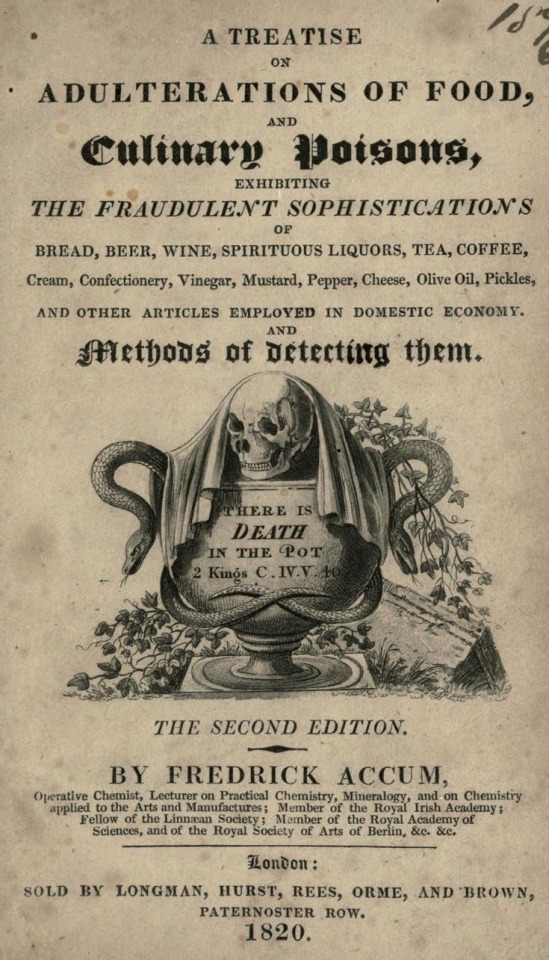
A Treatise on Adulterations of Food and Culinary Poisons by Frederick Accum, 1820.
This book was written by a famous English chemist and was an immediate success when it was first published and was into its fourth edition in only two years… but food adulteration statistics didn’t go down and Accum started to panic that instead of preventing it, he’d taught even more people how to do it, and he started vandalizing his own book in libraries and was forced to leave the country in disgrace.
Source: Christie’s Auction House
37 notes
·
View notes
Text
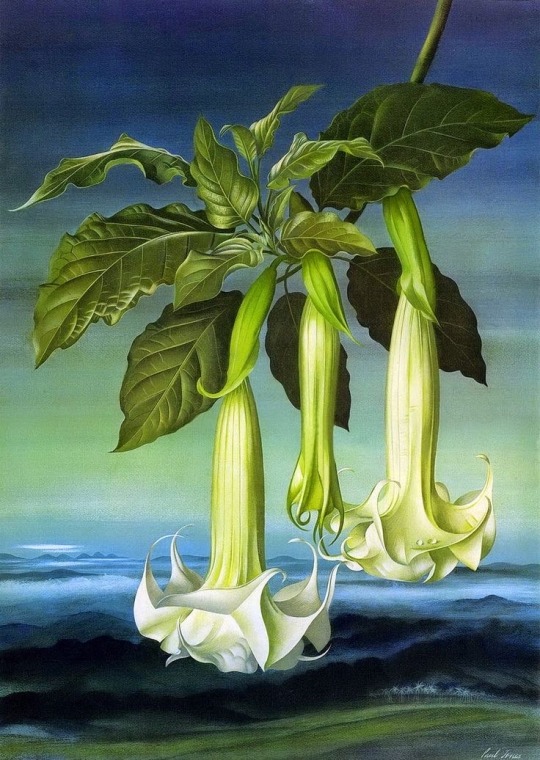
Poisonous brugmansia flowers painted by Australian botanical artist Paul Jones, 1921-1997.
#bane folk#paul jones#botanical art#australian artist#brugmansia#poisonous plants#baneful plants#toxic botanicals
61 notes
·
View notes
Text
“Perhaps the attraction of poisonous plants is how they subvert our anthropocentric view of the world. We believe we hold dominion over all, and yet these delicate growths have the power to transform, even control us.”
— excerpt from The Dual History of Poisonous Flowers by Ligaya Mishan, 2020
20 notes
·
View notes
Text
Romans Stored Henbane Seeds in Vial Made From an Animal Bone
“Archaeologists in the Netherlands have discovered a Roman settler’s stash of poisonous seeds, sealed in a hollowed-out animal bone 2,000 years ago.
The discovery is the first evidence that Romans in the Netherlands collected and stored seeds from the black henbane plant, a highly toxic member of the nightshade family. While the plant has long been notorious for its poisonous effects, it also has a reputation as a medicinal aid.”
Link to Smithsonian Magazine article

#bane folk#poisonous plants#baneful plants#baneful herbs#toxic botanicals#poison as medicine#ethnobotany#archaeology#black henbane#henbane#hyoscyamus niger
41 notes
·
View notes
Text

Foxgloves by Beatrix Potter circa 1903.
#bane folk#foxglove#foxgloves#digitalis#digitalis purpurea#poisonous plants#poison plants#baneful plants#baneful herbs
77 notes
·
View notes
Text
The 70s were a different time man.
The Herb Book by John Lust, 1974.
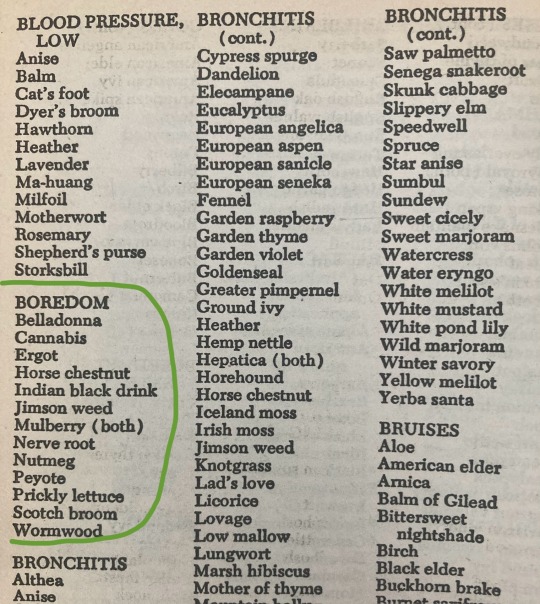
131 notes
·
View notes
Text


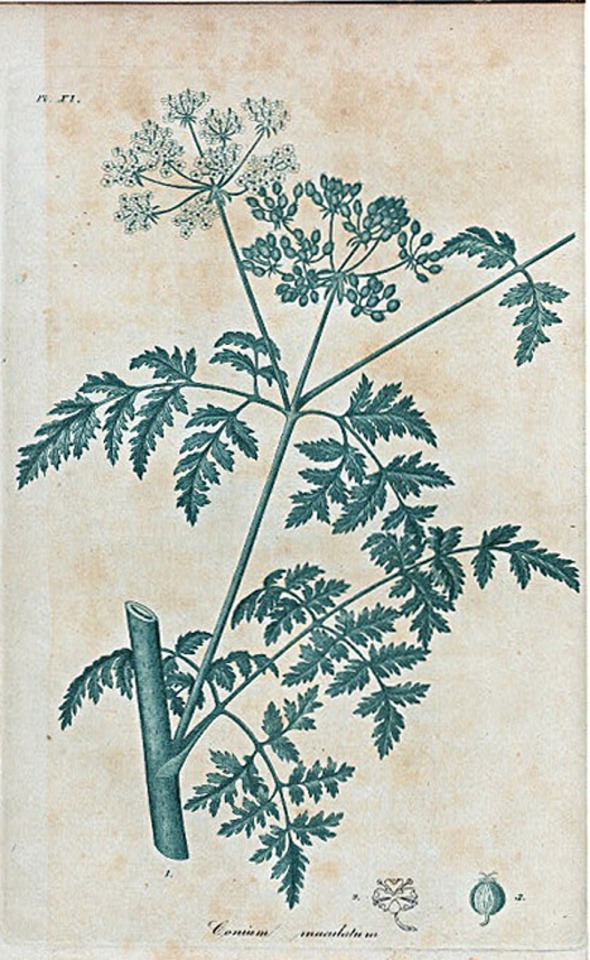

Coloured engravings of the poisonous plants datura, henbane, and hemlock from American Medical Botany: Being a Collection of the Native Medicinal Plants of the United States by Jacob Bigelow, 1817.
Source: New York Public Library
#banefolk#bane folk#poisonous plants#poison path#baneful plants#baneful herbs#henbane#hyoscyamus niger#datura#datura stramonium#hemlock#poison hemlock#conium maculatum#antique books#antiquarian books#pharmacopoeia#materia medica#botany
102 notes
·
View notes
Text
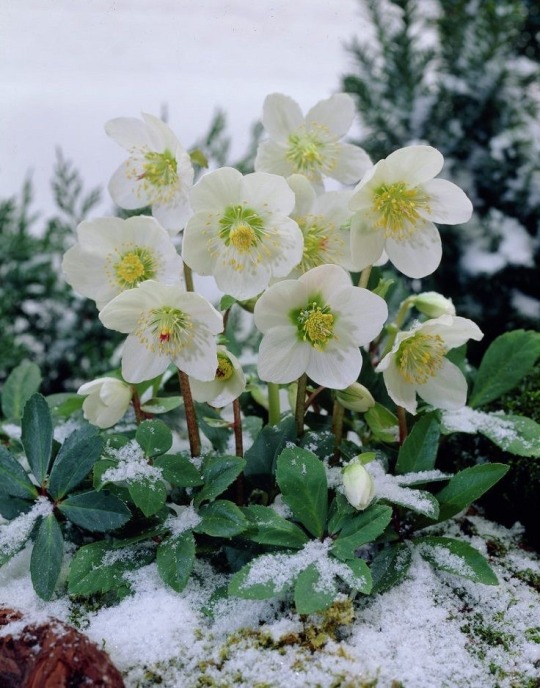
Christmas Botanicals Series: Black Hellebore
Next up in the christmas botanicals series is the christmas rose, also known as black hellebore. Hellebore is a flowering perennial with evergreen leaves in the famously poisonous Ranunculaceae family which also contains aconites (wolfsbane), delphiniums, meadow rues, clematis species, and ranunculus (ranging from wild buttercups to ornamental flowers).
Hellebore contains saponins, cardiac glycosides, and other toxins. While ingestion of hellebore may not be deadly to humans, it is incredibly unpleasant. Symptoms include contact dermatitis, burning skin, burning of the mouth and throat, stomach pain, nausea, vomiting, diarrhea, dizziness, confusion, and irregular heartbeat.
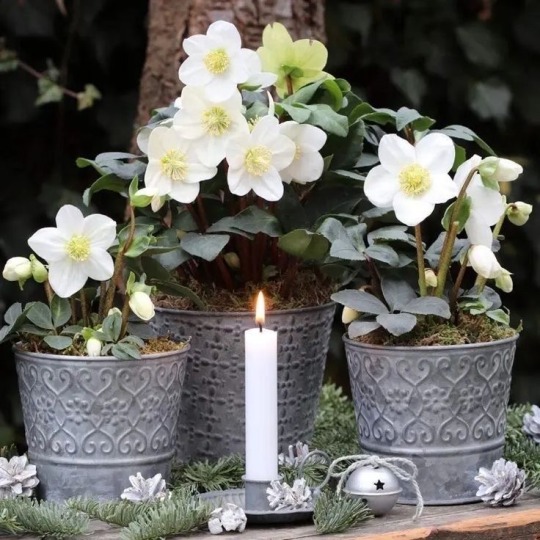
Hellebore was one of the first documented chemical weapons used in warfare. The Greeks used the potently poisonous leaves to taint the entire water supply of the sacred city of Kirrha in 585 BCE to end a 10-year siege. It did not kill the residents but incapacitated them with vomiting and diarrhea while the Greek army invaded and slaughtered the entire population by the sword.
Hellebore has been venerated as a powerful plant by multiple ancient civilizations and was included in medical texts by the likes of Hippocrates and Theophrastus.
Black hellebore eventually became associated with christmas due to its evergreen leaves and naturally blooming in winter near the older date of christmas from the Julian calendar. Like mistletoe, the association is likely older than christianity and it was also brought in the home during the dark of winter to protect from evil spirits, ghosts, witches, and illness, but unlike mistletoe hanging in the roof rafters, hellebore was supposedly strewn on the ground with the rushes. Like hanging mistletoe, people in the British Isles and Europe continued the protective practice after converting to the new religion. Today the practice has changed to decorating with hellebore flowers for christmas.
#bane folk#poisonous plants#poison path#hellebore#black hellebore#helleborus niger#helleborus#christmas botanicals#christmas plants#christmas rose#plant folklore#ethnobotany#magical plants#magical herbs#green witchcraft#green witchery
29 notes
·
View notes
Text
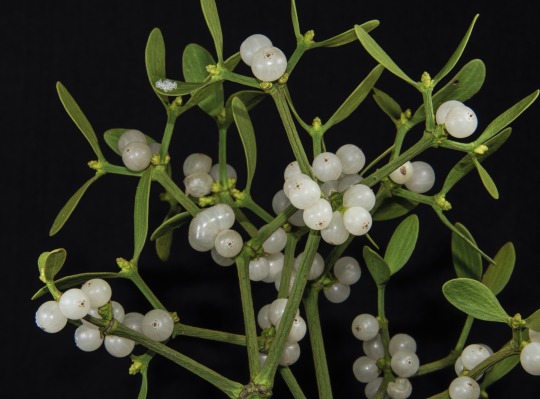
Next in the christmas botanicals series is mistletoe, the famous white-berried tree parasite associated with druids, animal sacrifice, thunder god semen, the death of the Norse god Baldr, and the Trojan hero Aeneas using it to safely travel to the underworld. Many of us may think of mistletoe as belonging solely to the British Isles and Europe, but did you know there are 1500 different species of mistletoe worldwide? There are mistletoes in the United States, Mexico, South America, Asia, and Australia too.
Mistletoe is another poisonous plant used by our pagan ancestors for spiritual protection in winter. It was brought inside homes and placed in the rafters around the winter solstice to protect from ghosts, evil spirits, witches, illness, lightning, house fires, and bad luck in general. Unlike other winter greenery, it was left up all year and only replaced at the next winter solstice or christmas day. The practice is a living tradition of paganism. It wasn’t really adopted/stolen by the church, people simply never stopped the tradition. The church never banned it. Only a handful of later Protestant ministers got upset about the newer kissing tradition in the 1800s.
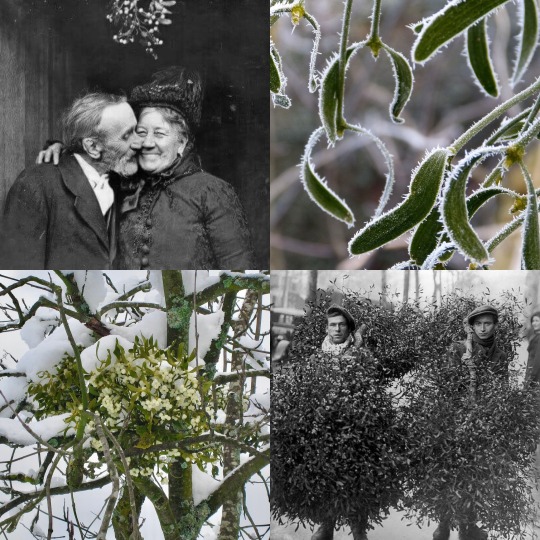
Kissing under mistletoe is believed to be Scandinavian in origin —that those who kissed under it were supposed to have a true and enduring love. This superstition ended up twisted by pervy Englishmen into a tradition of “a woman can’t refuse a kiss under the mistletoe or bad luck will befall her.” As the kissing superstition is fairly recent and largely invented —feel free to ignore it.
Mistletoe was once believed to be an antidote to all poisons and diseases. We know that’s not the case today but it does have historical traditional uses of treating arthritis, high blood pressure, respiratory issues, epilepsy, and infertility. While the plant itself has not been shown to help with cancer, some of its extracted and concentrated toxins have been found to be cytotoxic (destroys cancer cells).
Like the Native American snowberry (see previous post), mistletoe is also traditionally used to protect the cradles and beds of babies and small children. It can supposedly protect adults too when placed in the bedroom. Its presence is supposed to provide a good sleep with happy dreams.
If you have a bit of time, it’s quite a fun herb to research and maybe you’ll discover a native species growing in your region!
Resources: Wikipedia, Cunningham’s Encyclopedia of Magical Herbs, Folklore & Symbolism of Flowers, Plants and Trees, and The Folklore of Plants (Thiselton Dyer, 1889).
#bane folk#poisonous plants#poison path#mistletoe#viscum album#christmas botanicals#christmas plants#plant folklore#ethnobotany
57 notes
·
View notes
